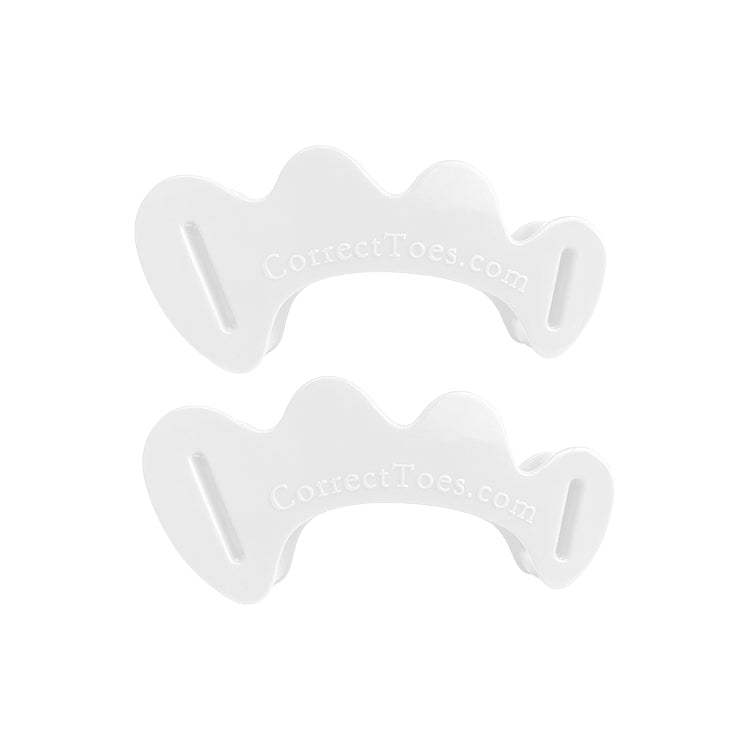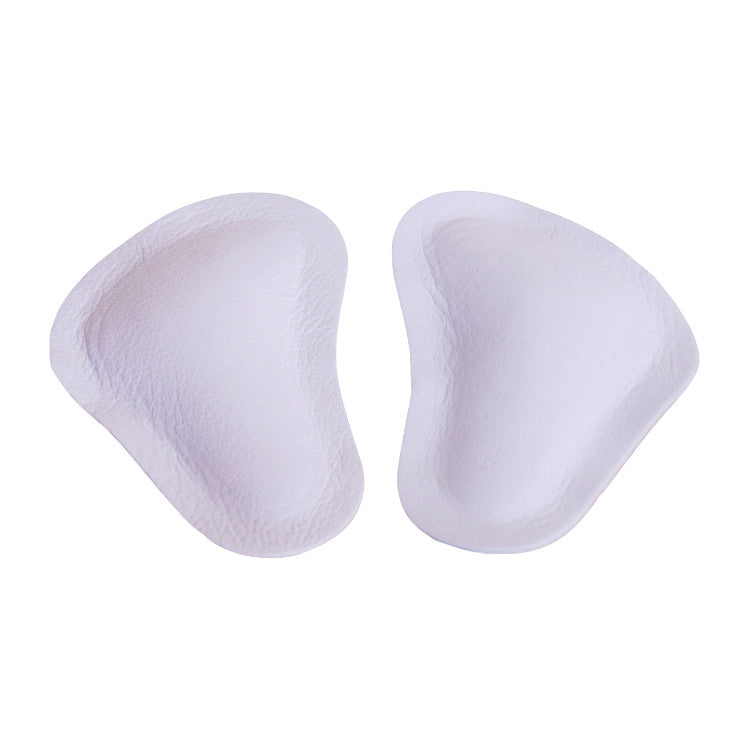
In order to understand how our feet would develop without shoes, we need look no further than barefoot cultures that currently exist around the world in places like Asia, Africa, and South and Central America. The feet of barefoot individuals are characterized by strong, sturdy arches, thick calluses on the underside of the foot, and perfectly straight toes that are splayed well apart. In shoe-wearing societies, we have lost the image of what a truly healthy adult foot actually looks like and what constitutes normal and natural foot and toe anatomy. For most people, seeing an example of how a natural human foot should appear can be quite shocking and revelatory.
Conventional footwear incorporates several problematic design elements (e.g., heel elevation, toe spring, tapering toe boxes, and rigid, inflexible soles) that prevent the foot from functioning in a natural way and can change the tone and function of key foot and toe tissues over time, which in turn often results in a variety of foot ailments. Foot problems such as bunions, crooked toes, neuromas, ingrown toenails, and plantar fasciosis can almost always be traced back to footwear that alters normal foot anatomy and function.
A number of impactful studies have looked at the feet of the unshod (i.e., non-shoe-wearing people) and shed light on this topic. These studies offer a unique, first-hand perspective on how our feet would develop without shoes. While most of these studies were performed in the early twentieth century, the implications for contemporary shoe-wearing individuals are still relevant.
In 1905, Philip Hoffman, after studying the feet of unshod individuals from the Philippines and Central Africa, concluded that adult shoe-wearers lose function in parts of the foot, including the arch and toes, due to the constriction placed on the foot by modern shoe design. In a study performed on the inhabitants of the Congo in 1931, Earl T. Engle and Dudley J. Morton made similar conclusions, specifically noting that these populations were free from the static foot conditions widespread in shoe-wearing cultures.
If you would like to read more about these specific studies, you can find them here:
Also, there is a list of even more natural foot-related studies here.
So, if our feet were allowed to develop without shoes, a (non-exhaustive) list of possible advantages might include the following:
- Stronger foot arches
- Improved posture and gait
- Better foot and toe circulation
- Enhanced foot and toe dexterity
- Improved balance and body weight distribution
- Reduced pain in the feet, ankles, knees, and hips
- Reduced wear and tear on the lower extremity joints
- A reduced likelihood of experiencing common foot ailments
On the other hand, some possible disadvantages that might be associated with feet that develop without shoes are:
- An increased likelihood of experiencing acute foot injuries (e.g., cuts, bruises, etc.)
- An increased likelihood of experiencing traumatic foot injuries (e.g., breaks due to blunt force trauma)
- An increased likelihood of experiencing skin issues (e.g., frostbite, sunburn, hookworm infection, etc.) that arise from exposure to environmental conditions
It’s not always culturally appropriate for those of us in contemporary shoe-wearing societies to bare our feet in public, but for most, it is possible to emulate barefoot cultures by adopting men's and women's minimalist shoes that let the foot function like a healthy barefoot inside the shoe.

WANT TO IMPROVE YOUR FOOT HEALTH?
Let the team at Natural Footgear help you! Subscribe to our newsletter for the latest offers and helpful info, and sign up for our FREE email courses on various topics and foot health conditions.
Sign Up →
Want to Improve Your Foot Health?
We are here to help you every step of the way. Get our newsletter for the latest offers and helpful info, and sign up for our FREE email courses on various topics and conditions, including bunions, hammertoes, neuromas, plantar fasciosis, shin splints, ingrown toenails, and more.
Sign Up →
 It’s true that most shod humans are not currently adapted to walk or run barefoot on hard surfaces such as asphalt or concrete, but that doesn’t mean we don’t have the capacity to do so. Our feet are remarkably adaptable and can, with time and careful exposure, learn to tolerate a wide variety of surfaces—soft, hard, smooth, or bumpy—as long as the foot is strong and free of acquired, footwear-induced...
Read more
It’s true that most shod humans are not currently adapted to walk or run barefoot on hard surfaces such as asphalt or concrete, but that doesn’t mean we don’t have the capacity to do so. Our feet are remarkably adaptable and can, with time and careful exposure, learn to tolerate a wide variety of surfaces—soft, hard, smooth, or bumpy—as long as the foot is strong and free of acquired, footwear-induced...
Read more













Thanks for all the info you share on your site! My question is: Do different foot shapes require different minimalist shoe styles, and how can I find the best fit for my feet?
Hi, Maya. Much appreciation for your thoughtful question! At Natural Footgear, we firmly believe that finding the right minimalist shoe begins with understanding your unique foot shape and biomechanics. While conventional footwear often forces feet into a narrow, standardized mold, minimalist shoes should work with your natural anatomy, not against it. People have varying foot structures—some have wide forefeet and narrow heels, others have high or low arches, and some may have longer second toes (Morton’s toe). These differences mean that while minimalist footwear generally promotes natural foot function, the ideal model and fit will vary based on individual foot characteristics.
One of the most critical factors in choosing the right minimalist shoe is the toe box shape. A shoe that accommodates your natural toe splay is essential for comfort, balance, and long-term foot health. For individuals with especially wide feet or preexisting conditions like bunions, models with extra forefoot space—such as those designed with anatomical toe boxes—will provide the best experience. It’s important to consider your specific toe length-based foot shape, though, to find a brand or model that most closely matches up. Generally recognized toe length-based foot shapes include the following: Egyptian, Roman, Greek, Celtic, or Germanic. More info about each of these foot types can be found online.
Beyond toe box shape, heel width and midfoot volume play a role in finding the best minimalist shoe. People with narrow heels may need models that provide a secure fit around the ankle to prevent slipping, while those with higher-volume feet should look for shoes with adjustable lacing systems or flexible uppers to ensure a non-restrictive fit. Additionally, factors such as instep height and overall foot length distribution influence comfort and performance. That’s why trying on different styles—or at least carefully measuring your foot dimensions and comparing them to brand-specific sizing charts—can help ensure an optimal fit.
To find the best minimalist shoe for your foot shape, we recommend testing out a variety of models, and when you find one that’s well-suited to your unique foot, engage in a gradual transition process. If you’re new to minimalist footwear, start with a model that offers some flexibility and ground feel without being overly thin or unstructured. Pay close attention to how your feet feel during various activities—whether walking, running, or engaging in sports—since different models cater to different movement patterns. We also encourage pairing your minimalist shoes with toe spacers, foot-strengthening exercises, and proper mobility work to fully embrace the benefits of natural foot function.
At the end of the day, the goal is not just to find a shoe that fits but one that enhances your natural foot mechanics and permits the highest quality of movement possible. Minimalist footwear should allow your toes to spread, your arches to engage, and your entire foot to function as nature intended. By understanding your foot shape and foot volume and selecting a model that complements these things, you can unlock the full potential of your feet, fostering better balance, strength, and long-term musculoskeletal health. If you’re unsure where to start, we at Natural Footgear are always happy to help guide you toward the perfect fit!
Yours in Foot Health,
Drs. Marty & Robyn Hughes